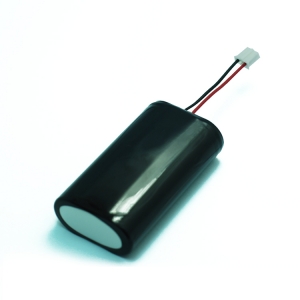Why There Are Still Some Lithium-ion Batteries That Explode Up to Today?
There might be a battery explosion when internal electrical parts short-circuit, when mechanical issues occur after a fall or an accident, or when they is installation error. All of these failures happen when one side of the battery is heated up and cannot lower down the high temperature fast enough, creating a continuous reaction that generates more and more heat. This kind of snowball process is usually termed as thermal runaway.
Introduction
The process can occur in just milliseconds. This has attracted much attention from the press. But it turns out that not all batteries are equally likely to fail. Any energy storage device carries a risk, as demonstrated in the latest moment on 15th March 2017, involving a pair of headphones exploding on a plane. Many batteries come along with a safety risk, and battery manufacturers are supposed to meet safety requirements.
Even though Lithium-ion batteries are safe, there are millions of customers using then so failures are bound to occur. A one-in-200,000 mechanical failure that happened in 2006 caused a recall of close to six million lithium-ion packs (Battery University).
Specialists of the lithium-ion batteries comment that on rare occasion microscopic metal particles may touch with other parts of the battery cell, causing a short circuit with in the cell.
So why do people and businesses still use them?
Lithium-ion batteries are super-efficient. They keep large capacity of energy in a small space and can keep electronic gadgets working for a long time. Li-ion power cells are also ranked highly in technology. The earliest rechargeable lithium-ion batteries were made for Handy-cams 25 years ago, and now there are many battery suppliers around the globe.
But unlike most advanced technologies, they get volatile with time. This is mainly due to the fact that we want higher-capacitydable batteries in small packages at affor prices. The symptoms may be the similar as they explode but a lot of other factors might be contributing to lithium-ion’s explosions.
These include;
Production Flaws
With all these exploding batteries, the first diagnosis is something must be wrong with the ways the battery is manufactured. Many people might think like that, but Samsung Note 7 issue illustrates that pinpointing the key flaw is not very easy. The initial recall involved devices that had batteries made by Samsung, the ones that did not have enough room between the battery’s protective pouch and electrodes. The squeeze tilted the electrodes in some batteries, leading them to short-circuit. But once the devices were recalled, replacing them with safer batteries from another firm had different issues. Many were not wrapped well, while others had ragged edges inside that caused damage to the main separator. That also caused short circuiting, but for entirely different reasons.
User-Supplied Damage
Even if a device is designed well, continuous dropping and subjecting it to long-term wear and tear can cause damage to the volatile energy source. The best way to tell if your battery is damaged is if it looks all swollen—evidence that the chemicals inside the battery are producing too much gas. That swelling also creates its own stress with the battery housing, which could result to a rupture. Unfortunately, a lot of devices today have a sealed-in battery, and taking the device apart to inspect it involves nullifying the warranty. If the external package of any device appears to be pushing apart or feels abnormally hot to the touch, it’s best to be careful and bring it in for inspection.
Battery Design Flow
Most of today’s devices are designed to be as slim, light, and sleek as possible in order to go with the trend. That can cause stress on an otherwise well-built battery, especially a high-capacity cell packed into a tiny body. Pressure from the hardware surrounding the battery can lead to damage to the electrodes and lead to short circuiting. Insufficient venting or thermal management can lead the flammable electrolyte inside the battery to heat up. Once it gets hot, chemical reactions can cause it to heat up even more and spiral out of control. It’s a situation called thermal runaway that often ends in an explosion or fire.
Industry Pressure and Competition
Companies make billions of profits when they save a small amount on each battery. As a result, many lithium-ion battery manufacturers do shortcuts in order to price their cells at affordable prices. The materials may not meet the required quality, causing damage in the already-thin separator. This situation was likely a major cause of the hoverboard fires: The first models on the market were expensive, and their popularity bred knockoffs with cheap prices and even cheaper internals. Crowd funding and low-priced components have democratized the consumer-electronics industry, but savings often come at the expense of safety.
Even though exploding batteries sound scary, they’re actually quite rare. Himax is committed to supply safer lithium batteries to its customers by using LiFePO4 cells in a variety of applications. LiFePO4 is a more stable and safer cathode material.



